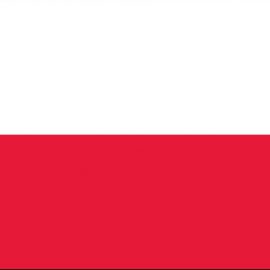The national flag of the Bahamas consists of a large black equilateral triangle situated at the hoist with three horizontal bands, from top to bottom, of aquamarine, gold and aquamarine. The triangle points toward the body of the flag.
The design of the Bahamian flag reflects aspects of the natural environment (sun, sand, and sea) and the economic and social development. The gold/yellow stripe in the middle of the flag represents the sandy beaches of the 700 Bahamian islands and other rich land resources, and the two aquamarine stripes represent the aqua blue ocean waters that surround the islands. The black triangle pointing toward the body of the flag represents the determination and strength of the Bahamian people to develop and possess the rich resources of sun and sea symbolized by gold and aquamarine respectively.
The flag of The Bahamas was officially adopted on July 10, 1973. This is the date of the nation’s independence from the United Kingdom. This flag was the result of a local competition for a new national flag, although no single entry was selected. Instead, several entries were combined to create the new flag.
There are interesting rules on how to use the Bahamian flag for certain events. For a funeral the National Flag should be draped over the coffin covering the top completely but not covering the bearers. The black triangle on the flag should be placed over the head of the deceased in the coffin. The flag will remain on the coffin throughout the whole service and removed right before lowering into the grave. Upon removal of the flag it should be folded with dignity and put away.
While the flag is displayed, it should never be displayed pointing upwards or from the viewer’s right. This would be a sign of distress.
https://www.wikidata.org/wiki/Q103447,https://en.wikipedia.org/wiki/Flag_of_the_Bahamas
NYL-3×5-BHS
Flag of the Commonwealth of the Bahamas





















